It’s here. April and March are prime butterfly months in Southern California. (other regions – see below)
For this article I tapped environmental consultant and butterfly expert Michael Klein. I know Michael from his years consulting for the Back Country Land Trust (BCLT) in San Diego County when I was on their board. In Wrights Field, one of BCLT’s preserves in Alpine CA, Michael helped save the land from development. He helped document the existence of two wonderful little butterflies — the Quino checkerspot butterfly and the Hermes Copper butterfly. — whose populations were getting increasingly hammered from development, wildfires and drought.
While the endangered Quino was once one of the most common butterflies in Southern California, the Hermes population was always low, hindered by its habit of traveling very little and using only one hostplant, the Spiny Redberry. Then the wildfires hit, and they lost 40% of their remaining habitat. Although Michael is now wheelchair bound due to physical challenges, he’s a wealth of info.
Here are common butterflies to observe in our backyards and short walks, perhaps to a nearby open area. Here they are, divided into five of the six butterfly families.
Swallowtails – (Family Papilionidae)
Swallowtails are large, with the characteristic of long hindwings Their caterpillars feed on the leaves of citrus trees.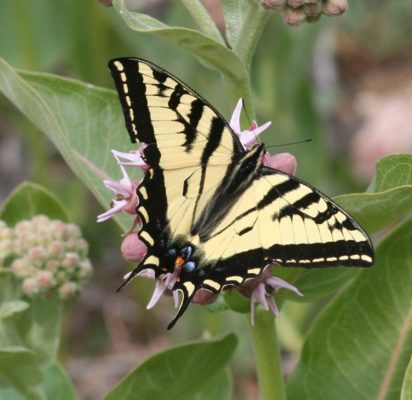
- Western Tiger Swallowtail – can be found near and around oak riparian areas and can get to backyards. Its hosts include sycamore trees.
- Anise Swallowtail – fairly common in scrub habitats adjacent to homes
- Giant Swallowtail – with all the citrus groves and many home owners having an Orange, Lemon or Lime trees, this butterfly would be a regular.
Whites and Sulfurs (Family Pieridae)
Small to medium, most have pale white or yellow wings.
- Cabbage White – very common in yards, especially if you grow some crops
- Checkered White – found mostly within native habitats but may venture to yards if they are close to native sources
- Orange Sulphur – fairly common since caterpillars feed on mustards
- Cloudless Sulphur – caterpillars feed on Senna (plants, scrubs or trees). Large butterfly as sulphurs go and almost always seen around the hostplant of Senna
- Sara Orangetip – usually likes to follow a streambed but could visit yards that are adjacent to streambeds
- Desert Orangetip – similar to Sara but also likes open space preserves
Gossamer-Winged Butterflies (Family Lycaenidae)
These small and quick butterflies include hairstreaks, blues, and coppers. ‘Gossamer-winged’ refers to how bright colors streak their wings, making them flash in the sun.
- Gray Hairstreak – small and fast butterfly but can sit on any plant for longer observation
- Bramble / Coastal Green Hairstreak – always identified with the green underside wings. This butterfly is still going through name changes
- Silvery Blue – common along trails adjacent to backyards during spring
- Marine Blue – if you have Wisteria in your yard, this butterfly can be observed laying eggs on the plant
- Spring Azure – can be observed along trails in native scrub
- Bernardino Blue – if your have buckwheat in your yard or is nearby along a trail, this small butterfly can be regular. It is part of the Square-spotted Complex of blues
- Acmon Blue – very common along trails and if you have lots of native plants in your yard they can be observed regularly
- Brown Elfin – if your short walk takes you into chaparral, this butterfly can be common
Metalmarks (Family Riodinidae)
Mostly shades of brown, gray or rust. ‘Metalmark’ comes from shiny metallic scales on their wings.
- Behr’s Metalmark – is usually found along trails containing buckwheat. Can be very common
- Mourning Cloak – can be seen around Chinese Elms or riparian streambeds and enjoys resting under eaves of homes
- Red Admiral – very common in neighborhoods and enjoys a plethora of plants to feed on nectar
- Monarch – very cosmopolitan in SoCal
- Painted Lady – can be overwhelming in Spring in some years – as is occurring now and last spring (2019), sometimes mis-identified with Monarchs (but is much smaller)D
Did you know? “Back in the 70’s and 80s a butterfly expert wanted to get an idea of the Painted Lady butterfly’s dispersal. It has been called the Artic Tern of the butterfly world because of how far it can disperse. This expert would capture these Ladies, and place a tag on their wings with a number and telephone number for people to call in their sightings. This way our local expert would keep a database of what was seen and how far it had gone. Well, in the mid-1980’s a lady was tagged in El Cajon, San Diego County and released. Four weeks later he got aa telephone call from a person in Nova Scotia, Canada. This one Painted lady went from Southern California to NE Canada in 4 weeks.” Michael Klein
Skippers (Hesperidae)
Furry, large-eyed and large-bodied, I seem to notice these later in the summer and fall
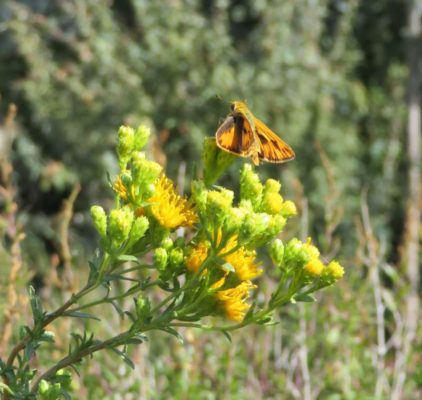
- Fiery Skipper – small, fast little yellow guy but common in yards because the caterpillars feed on Bermuda grass
- Eufala Skipper – small, fast little brown guy that also will be seen around your grasses as well as any flowering plants in your garden
Since this is being written during the homebound coronavirus pandemic, observing butterflies around your home can take up plenty of time. You may see others species, depending how close your home is to open spaces, riparian areas or even foothills. Also, having California native plants will attract many butterflies.
Weather Challenges?
And regardless of weather, Michael says they will come. “Recent rains have been extremely helpful to plants and will provide nectar resources for butterflies as well as many other insects like bees, etc. Cooler weather can delay emergence of some species but that only lengthens opportunities of observing butterflies into early summer,” he says. “Like all animals, water is key. Many people do not realize insects require water, a common butterfly practice is ‘puddling’ where they get their daily intake of water and nutrients in the puddle.”
Major rains? As for the 5 days of pretty continuous rains we’ve just had in Southern California, Klein says most insects requiring nectar as a food or energy source can be delayed in most cases for days. So even with some mortality during rain events, it is usually not dramatic as we think.
“These guys have been around longer than you and me and have found ways to continue to survive.” Michael Klein
REFERENCES
iNaturalist – for sending in sightings, helping with id, etc.
Butterflies and Moths – good informational site and observers can also send in their sightings
BugGuide.net. – another free site where people can submit their own photos and if anyone cannot identify what insect or spider or other arachnids, experts can help you. “They may be slow to respond to your uploaded photo but they are a useful resource,” says Michael, and covers most of the U.S.
The 6 Butterfly Families and Identifying Butterflies – a good article about butterflies in the East
Other butterfly articles I’ve written include Attracting Butterflies to Our Yards, Favorite Plants for Butterflies and Birds (California/Southwest), Favorite Plants for Attracting Birds and Butterflies (Midwest/East) and What’s better than a Puddle Party
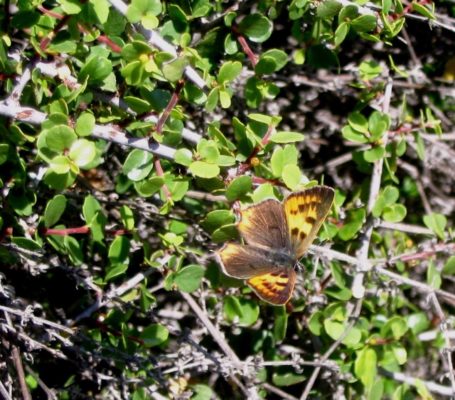
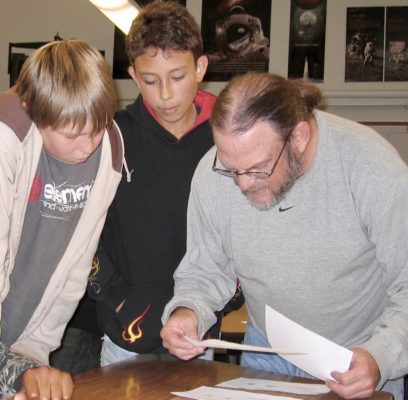
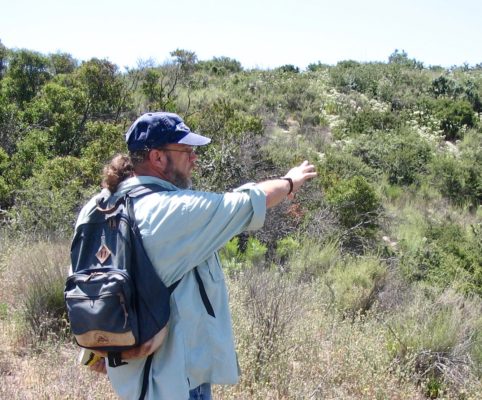
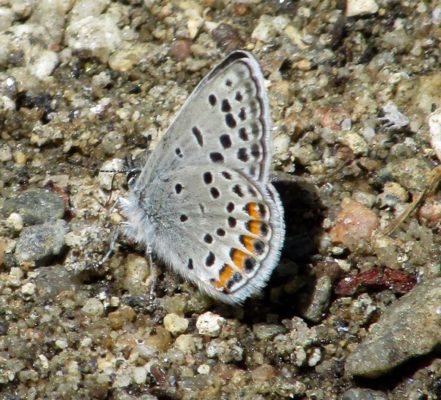
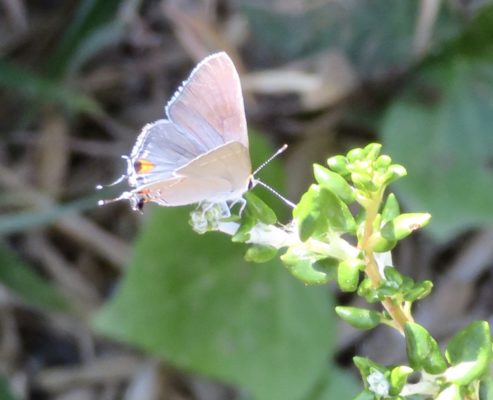
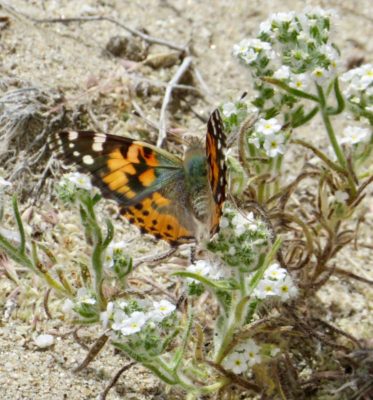
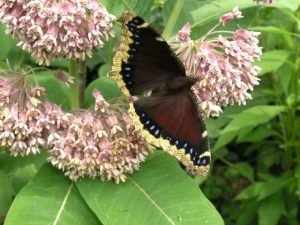
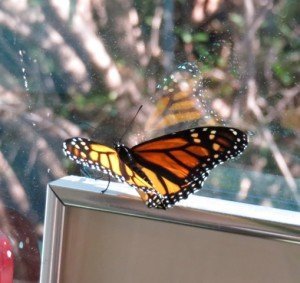
Leave a Reply